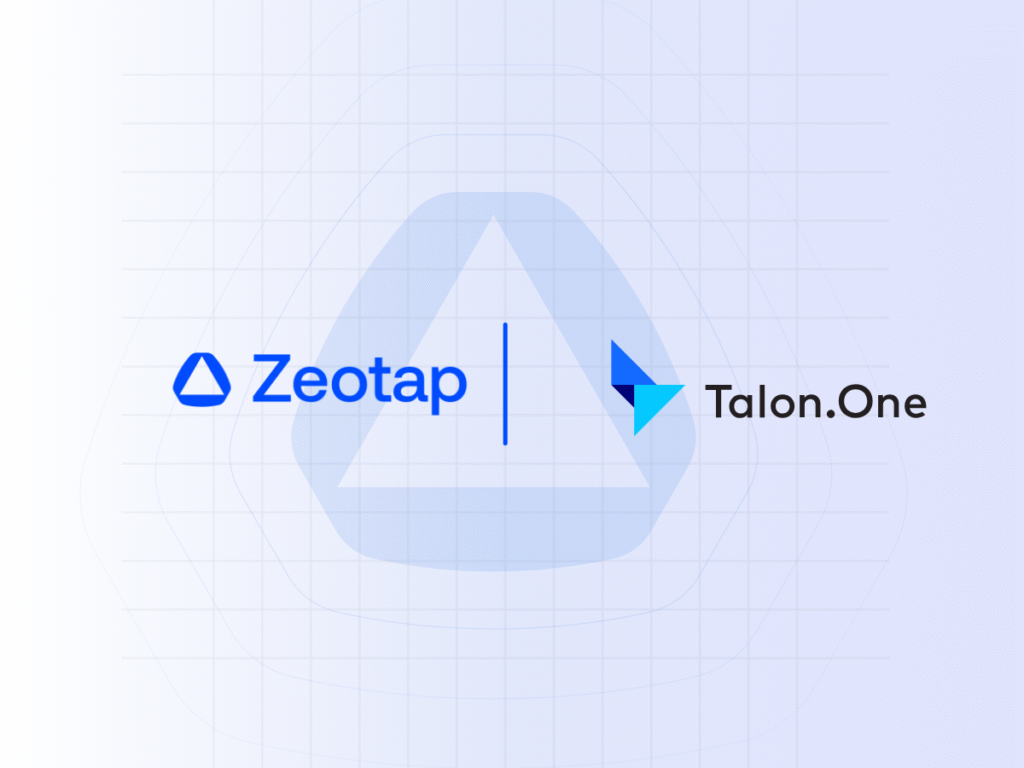
Customer Data Platforms (CDPs) consolidate and manage customer data from various sources, enabling companies to gain a comprehensive view of their customers and execute targeted marketing strategies. However, not all CDPs are created equal, and choosing the right type can significantly impact your business’s success.
This article explores the key differences between Best-of-Breed and Best-of-Suite CDPs, their respective advantages and drawbacks, and what a modern CDP architecture could look like.
What is a Best-of-Breed CDP?
A Best-of-Breed solution excels in a specific function or set of functions within the broader marketing technology stack. CDPs with a Best-of-Breed approach are typically developed by specialised vendors who focus on delivering cutting-edge features and capabilities in a particular area, such as data integration, customer segmentation, or real-time personalisation. By choosing a Best-of-Breed CDP, businesses can leverage the most advanced tools available for specific needs, ensuring they stay ahead in a competitive market.
For example, a company might opt for a Best-of-Breed CDP if its primary focus is on sophisticated analytics or if it requires a platform that can handle vast amounts of data with minimal latency. These CDPs are known for their flexibility and innovation, often being the first to introduce new features that cater to the latest industry trends.
What is a Best-of-Suite CDP?
In contrast, a Best-of-Suite solution is part of a broader suite of integrated tools provided by a single vendor. These platforms offer a more comprehensive range of features, covering multiple aspects of marketing and customer data management within one ecosystem. CDPs that follow the Best-of-Suite approach are designed to work seamlessly with other products in the vendor’s software suite, providing a unified solution that simplifies integration and management.
For businesses looking to streamline their operations, a Best-of-Suite CDP can be an attractive option. It eliminates the need to juggle multiple vendors and systems, reducing complexity and potential compatibility issues. Additionally, these platforms often come with pre-built integrations, making it easier to get up and running quickly.
Key Differences Between Best-of-Breed vs Best-of-Suite CDPs
When comparing Best-of-Breed and Best-of-Suite CDPs, several key differences emerge that can influence a business’s decision:
- Flexibility and customisation: Best-of-Breed CDPs offer greater flexibility, allowing businesses to customise their technology stack by selecting the best tools for each specific need. Best-of-Suite CDPs, on the other hand, provide a more standardised solution with less scope for customisation.
- Integration and compatibility: While Best-of-Breed CDPs, such as Zeotap CDP, are designed to integrate seamlessly with a variety of existing technologies, Best-of-Suite CDPs are designed for seamless compatibility within the vendor’s ecosystem, simplifying data flows and reducing potential integration challenges.
- Cost considerations: Best-of-Breed systems can be more expensive, as they often involve multiple software vendors and require additional resources for integration and maintenance. Best-of-Suite CDPs, however, may offer cost savings through bundled pricing and reduced complexity.
- Scalability and future-proofing: Best-of-Breed CDPs are typically more adaptable to changing business needs and can incorporate new technologies as they emerge. In contrast, Best-of-Suite CDPs may be slower to adopt new trends, potentially limiting long-term scalability.

Pros and Cons of Best-of-Breed CDPs
When evaluating Best-of-Breed software, it’s essential to consider both the strengths and potential drawbacks. Here’s a breakdown of the key pros and cons:
Pros:
- High specialisation and advanced features: Best-of-Breed CDPs are designed to excel in specific areas, offering deep functionality and advanced capabilities that may not be available in broader solutions.
- Ability to choose the best tools: Businesses can select the top-performing tools for each aspect of their customer data management, ensuring they have the best technology available for their unique needs.
- Innovation and up-to-date features: Vendors of Best-of-Breed CDPs are often at the forefront of industry trends, continually updating their platforms with the latest features and innovations.
Cons:
- Potential integration challenges: Managing multiple vendors and systems can lead to integration challenges, requiring additional resources to ensure smooth data flows and compatibility.
- Higher costs: Due to the need for multiple solutions and potential custom integrations, Best-of-Breed CDPs can be more expensive to implement and maintain.
- Complexity in management: Coordinating multiple tools from different vendors can increase complexity, requiring more time and effort to manage effectively.
Pros and Cons of Best-of-Suite CDPs
Pros:
- Seamless integration across functions: Best-of-Suite CDPs are designed to work seamlessly with other tools within the vendor’s ecosystem, reducing the risk of compatibility issues and simplifying data management.
- Simplified vendor management: With a single vendor handling multiple aspects of the CDP, businesses can streamline their vendor management processes and reduce administrative overhead.
- Potential cost savings: By bundling multiple tools within one suite, businesses may benefit from cost savings compared to purchasing and integrating separate Best-of-Breed solutions.
Cons:
- May lack depth in certain areas: While Best-of-Suite CDPs offer broad functionality, they may not provide the same level of depth and specialisation as Best-of-Breed solutions in specific areas.
- Risk of vendor lock-in: Relying on a single vendor for multiple aspects of the CDP can lead to vendor lock-in, making it difficult to switch providers or adopt new technologies in the future.
- Slower adaptation to niche trends: Best-of-Suite CDPs may be slower to adopt niche trends and innovations, potentially limiting their ability to stay ahead in a rapidly evolving market.
Differentiating Similar Concepts: Integrated vs Composable CDPs
When speaking about Best-of-Breed and Best-of-Suite CDPs, they are often referred to synonymously as Integrated (or Packaged) and Composable CDPs. However, the concepts differ slightly. Understanding the differences and knowing how the concepts relate to each other is important here.
Integrated vs. Composable CDPs
- An Integrated CDP is a platform that comes as a pre-built, all-in-one solution. It offers seamless integration within the vendor’s ecosystem, ensuring that different components of the platform work together smoothly. However, it may not be as flexible or adaptable to unique business needs.
- Composable CDPs, on the other hand, take a modular approach. They allow businesses to build their customer data platform by selecting and integrating various components, often from different vendors. This approach provides greater flexibility and customisation, enabling companies to create a solution that precisely fits their requirements. However, it requires more effort in terms of integration and ongoing management, similar to Best-of-Breed solutions.
Challenges of Composable CDPs
The modular architecture of composable CDPs presents challenges, particularly in dynamic and real-time environments.
- Not enterprise tested: Composable CDPs may lack the reliability needed for large-scale operations due to insufficient rigorous testing.
- Vendor management, maintenance, and cost: Managing multiple vendors and tools increases maintenance efforts and costs, including software, licensing, and integration expenses.
- Privacy concerns and security risk: The modular structure introduces multiple vulnerabilities and governance complexities, heightening the risk of data breaches and non-compliance.
- Data integration and ecosystem complexity: Composable CDPs may struggle with effective integration, leading to data silos and disrupted information flow.
- Real-time capabilities and integration: Achieving real-time interactions with up-to-date customer profiles might be challenging with a zero-copy approach.
Relationship Between the Concepts
The concepts of Best-of-Breed vs. Best-of-Suite and Integrated vs. Composable CDP overlap in that they both address how businesses can structure their customer data management systems. Best-of-Breed and Composable CDPs align closely as both focus on customisation and specialisation, while Best-of-Suite and Integrated CDPs emphasise ease of use and seamless integration.
However, there are also some important differences:
- Best-of-Breed focuses on choosing the best specialised tools and integrating them into a custom solution, while Composable CDPs offer even more granular control by allowing businesses to build their platform from modular components.
- Best-of-Suite provides a broad, integrated set of tools within a single vendor ecosystem, whereas Integrated CDPs deliver an all-in-one, pre-built complete solution that is easy to implement but less customisable.
CDP Architecture: Choosing the Right Approach
Ultimately, the choice between all the tools and approaches depends on your business’s specific needs, resources, and strategic goals. Therefore, before choosing a CDP, it is crucial to assess your organisation’s specific requirements, including
- the size and complexity of your operations,
- your data strategy,
- and your long-term goals.
For smaller businesses or those seeking a straightforward solution and lower management overhead, a Best-of-Suite or Integrated CDP may offer the simplicity and integration needed. Larger enterprises or those with specialised needs might benefit more from a Best-of-Breed or Composable approach.
In an ever-changing technological landscape, future-proofing your CDP strategy is essential. Ensuring that your chosen CDP architecture can grow and adapt with your business will prevent the need for costly upgrades or replacements down the line.
Key considerations include
- the scalability of the platform,
- its ability to integrate with new technologies,
- and its capacity to support emerging customer data needs.
Seamless Integration and Flexibility with Zeotap CDP
Zeotap CDP is positioned as a best-of-breed platform rather than part of a best-of-suite approach. As a platform-agnostic CDP, Zeotap CDP is designed to integrate seamlessly with any existing technology stack, which contrasts with suite-based CDPs that are often bundled with other products from the same vendor, like Adobe or Salesforce.
Zeotap focuses on providing advanced capabilities in data unification, identity resolution, and omnichannel activation, which makes it more flexible and powerful in environments where businesses need to leverage a variety of tools across different platforms. This flexibility is a significant advantage in the rapidly evolving MarTech landscape, where businesses benefit from adopting cutting-edge solutions that might not be available in a single vendor’s suite.
By emphasising ease of integration and advanced data management features, Zeotap CDP offers a compelling alternative to companies that prefer to assemble a tailored marketing stack using the best tools available rather than relying on a single vendor’s ecosystem.
Leveraging the Best Fit for Your Evolving MarTech Needs
Choosing the right CDP is a critical decision that can significantly impact your business’s ability to manage and leverage customer data effectively. Whether you opt for a Best-of-Breed, Best-of-Suite, Integrated or Composable CDP, understanding the advantages and challenges of each approach will help you make an informed decision that aligns with your business goals.
Zeotap CDP, as a Best-of-Breed solution, offers advanced capabilities and flexibility that can be particularly advantageous in a dynamic MarTech environment. As the landscape continues to evolve, staying attuned to the latest trends and advancements in CDP technology will be key to maintaining a competitive edge.





